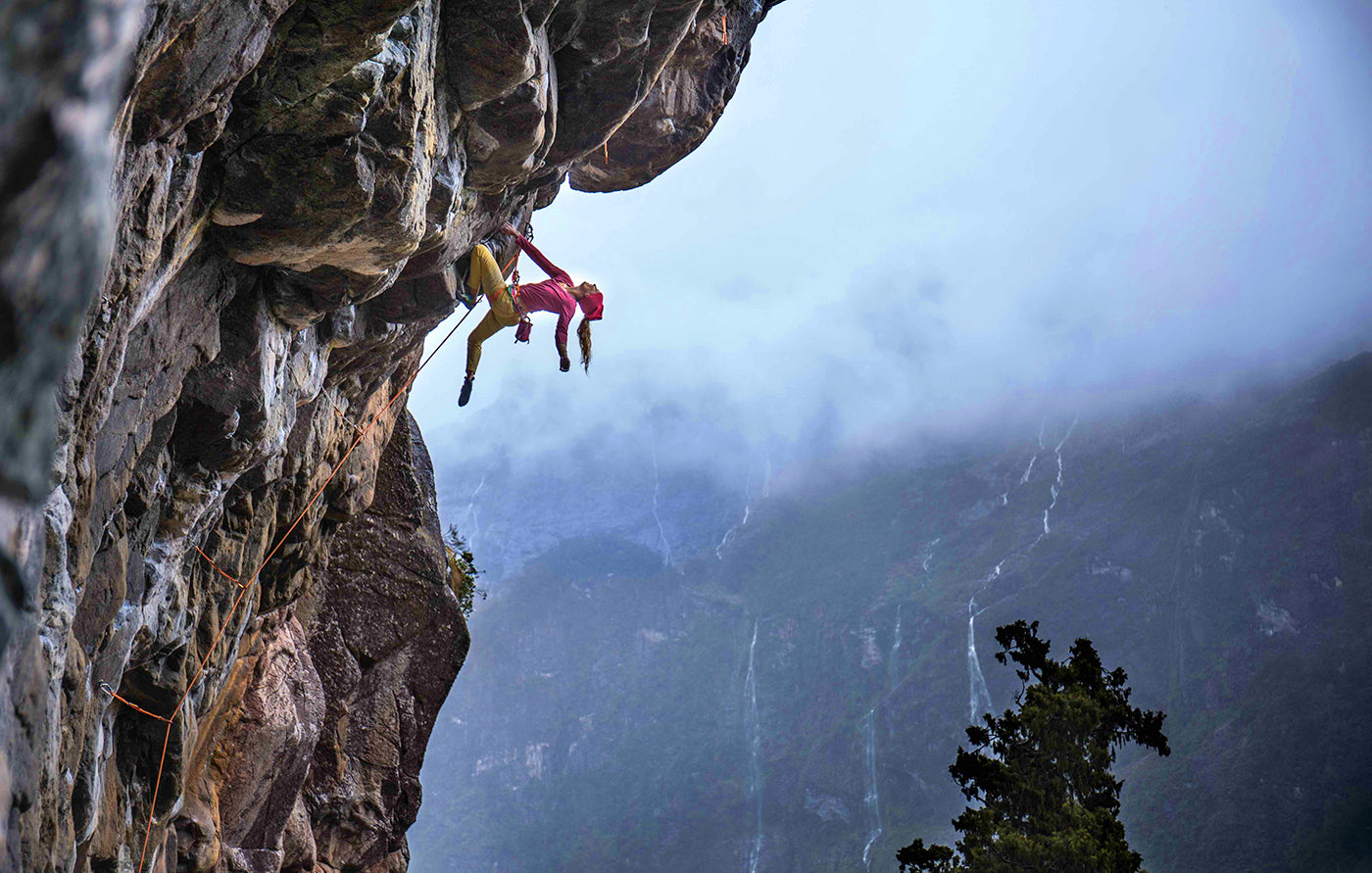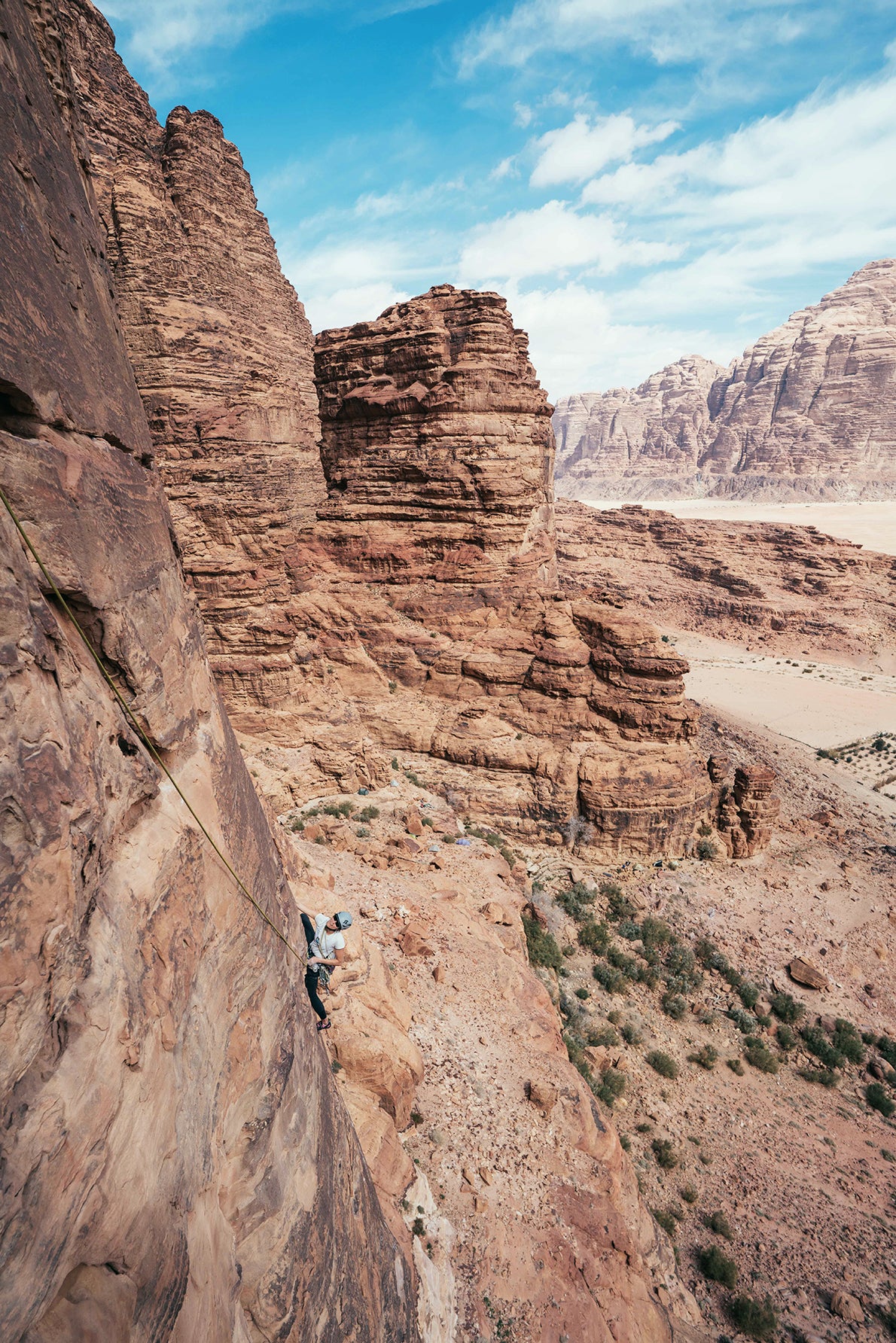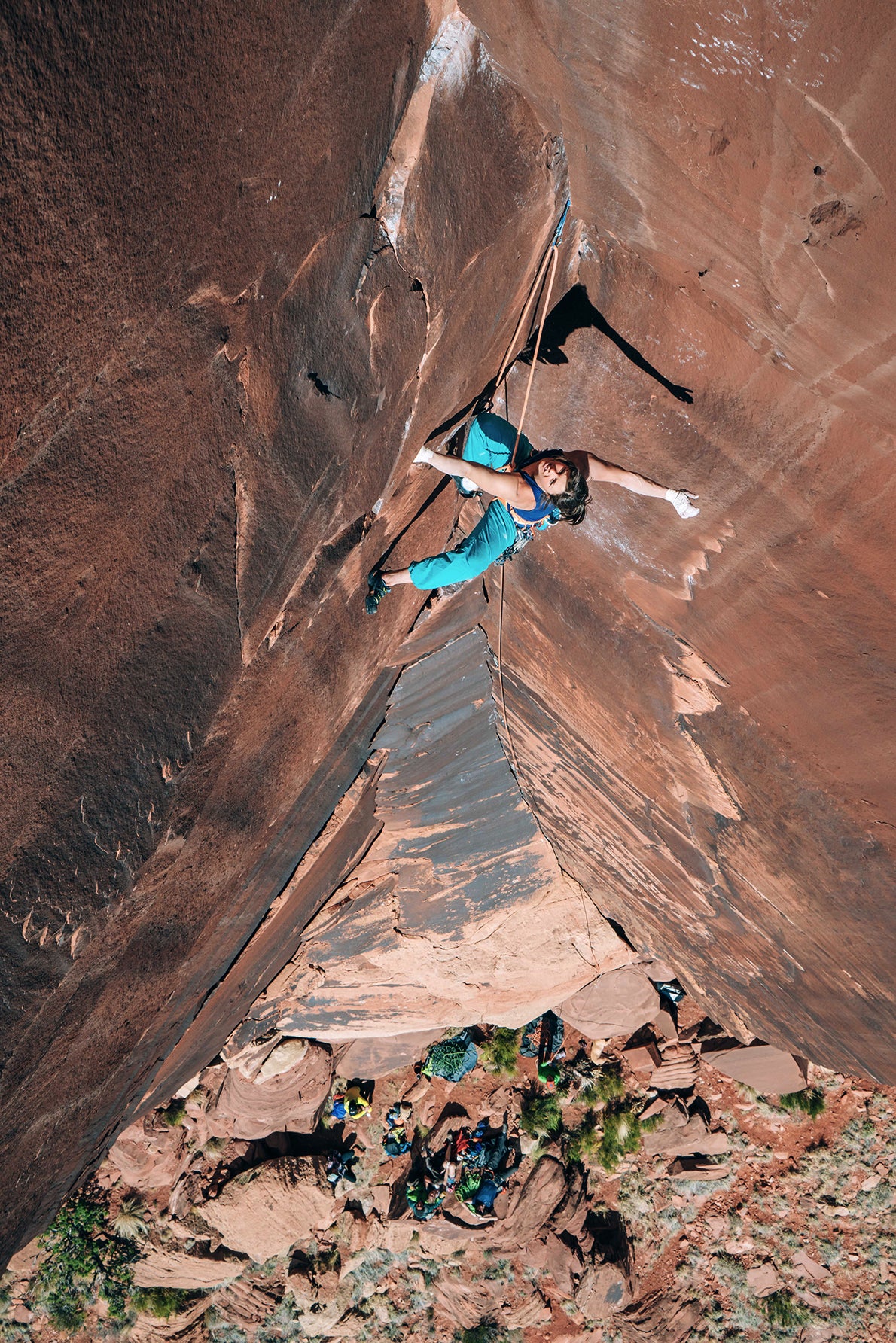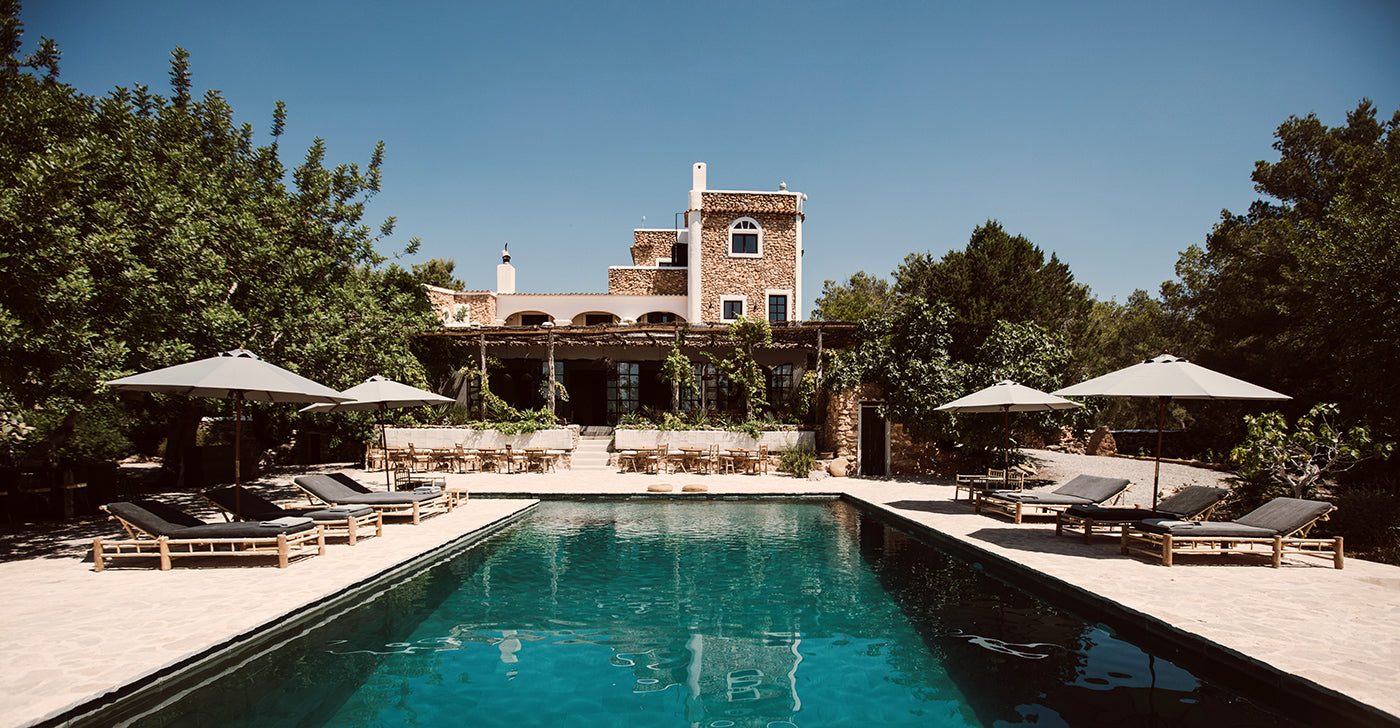
Taking Climbing To New Heights
A pioneering voice in the climbing world, Julie Ellison discusses the sport’s ascent to global appeal in the preface of Cliffhanger
The word “climbing” used to conjure up the image of a helmet-clad person covered in brightly colored clothes with mountain boots and sharp, pointy tools desperately clawing up a snow-covered peak. Or a muscled person hanging off the side of a steep rock face with a dizzying amount of air under their feet. Being a “climber” meant being part of a small, elite club where all the members seemed crazy and all the objectives seemed impossible. But since the early 2000s, climbing has spread beyond this niche and become accessible to anyone and everyone. It’s no longer a mysterious and little-understood pastime. It has trickled into the mainstream as an internationally recognized sport, a global fitness trend, and an all-consuming lifestyle. From indoor climbing gyms to hundreds of thousands of routes on real rock, climbing culture continues to grow—without showing any signs of slowing down.

Jordan’s Wadi Rum is an area of sandstone mountains that offer an adventurous style of rock climbing, combining the commitment and unknowns of the alpine with the hot, dry climate of the desert. (Photo: Julie Ellison, Cliffhanger)
Climbing has undoubtedly existed in some form or another for hundreds of thousands of years—humans have been ascending peaks and mountains for as long as both have been around. But modern rock climbing only came about in the mid-20th century, as an offshoot of mountaineering. Summiting mountains was considered a noble pursuit, but when weather was bad or time was limited, mountaineers would climb shorter rock faces and boulders for training. Eventually, climbers stopped taking the fitness and skills gained on these smaller rock features to the big mountains, and climbing these smaller objectives became the main attraction. Those early pioneers could not have imagined where climbing would go in a few short decades. Thousands of climbing gyms dot the globe, the highest difficulty level in outdoor climbs are 9A/V17 and 9c / 5.15d, a climbing film won an Oscar, and now climbing is in the Olympics—arguably the highest achievement for any athletic endeavor. There are climbing-centric careers, stores, gyms, manufacturers, books, movies, magazines, festivals, schools, organizations, nonprofits, podcasts, apps, and social media feeds—an entire industry based on climbing.

Co-editor of Cliffhanger, Julie Ellison faces the camera during a climb. She specializes in climbing photography, writing, and film, plus was previously editor-in-chief of Climbing Magazine. Using adventure as a way to experience the world and interacting with the global climbing community, she has transcended her experiences over the decades into this book.
And climbing has exploded for good reason—well, many good reasons. Climbing is fun! Difficult movement sequences offer a physical and mental challenge, and improvement happens on a regular basis. There is a problem-solving component, as well as a strength component, and if you do it enough, you will develop a muscled physique to boot. Climbing can be done alone, or with friends, at the local indoor spot for a few hours, or thousands of miles from the nearest town, surrounded by only a glacier and polar bears for a few months. Objectives range from 10-foot-tall (three-meter-tall) boulders to 26,000-foot (8,000-meter) peaks. There are so many different types of climbing that you can pick one and specialize in that, or try to master them all. And the challenges are endless. Tick your proudest ascent ever, and there are seemingly infinite other routes, problems, and peaks to ascend. If you want to see how strong and powerful you can get, try bouldering or sport climbing. If you just want to focus on overall fitness, visit the local climbing gym a few times a week. If you like the cerebral task of figuring out puzzles and controlling your fear, trad climbing is for you. If you prefer huge undertakings that require manual labor and a touch of suffering, then you might be a big waller or alpinist at heart. It is all climbing, and it is all awesome.

Bishop in California is a climber's paradise. It has it all, from world-class bouldering, sports climbing, trad routes, and alpine objectives. Pine Creek Canyon offers cool temps in the summer and warm sun in the winter. (Photo: Julie Ellison, Cliffhanger)
One tradition that has carried on from the earliest days of the sport is the fact that climbing is more than just a hobby or a way to fill one’s time. Climbing is also a lifestyle and a way to travel and experience the world. Committed climbers base their whole lives around the sport, chasing seasons and “climbing temps” in beautiful destinations near and far. Any vacation time can mean climbing trips, and our social circles are entirely climbers. Many climbers even move into their vehicles to save money on housing and live a simpler, more frugal lifestyle that allows them to climb more and work less. Eating, sleeping, training, and living for climbing.
While one book could not possibly cover all these things—and still be light enough to pick up—Cliffhanger aims to give you an overview of this worldwide phenomenon. By highlighting people, places, history, culture, technique, ethics, and other interesting topics, we will take an in-depth look at some of the most notable aspects of this fascinating activity. It lays out the basics and history of each of the major disciplines: bouldering, sport climbing, trad climbing, and alpinism, as well as 15 of the world’s best destinations, from China’s Getu Valley to Jordan’s Wadi Rum to Indian Creek in the United States. Take an exhaustive look into the life of a mountain guide, explain how the complex discipline of big wall climbing works, and describe the incredible growth of paraclimbing, as well as the downsides of climbing’s popularity. There are profiles of a dozen of the world’s leading climbers, including one family of four that among its members has multiple world championships, 9b / 5.15b, and 8C+/V16 ascents, and a ticket to the Olympics. Whether you are a longtime, dedicated climber or someone who has never climbed, you will find the following stories a balance of educational, informative, and entertaining. Throw in the breathtaking imagery of climbing incorporated with an aesthetic design, and everyone will enjoy flipping through the following pages to see what a life in the vertical is all about.

Utah’s sandstone mecca Indian Creek is where single-pitch cracks of every size offer a physical and mental beatdown that might result in some of the happiest days of your life. Nina Caprez takes a rest during her flash (climbing a route on the first attempt) of Desert Shield. (Photo: Julie Ellison, Cliffhanger)
Climbing veterans remain, but the people and places are widening and evolving as a new community grows globally around the sport. For Julie Ellison, climbing is always about the next challenge and that is what keeps her going. From her enthusiastic days as a teenager to becoming the first female editor-in-chief of Climbing Magazine, her outset has always been to explore different locations and revisit favored ones in new formats. She explains that climbing is a commonality that unites people across the world, it brings individuals together even when they can’t communicate through the same language. This connection weaved to the DNA of climbing is what pulls this community together, and ultimately is giving rise to the sport with a global appeal.
Find out more about life in the vertical through Cliffhanger, available across America from June 2.


